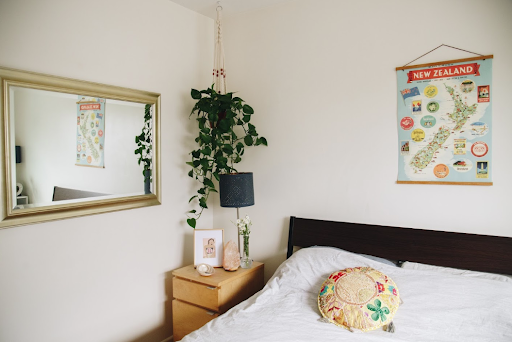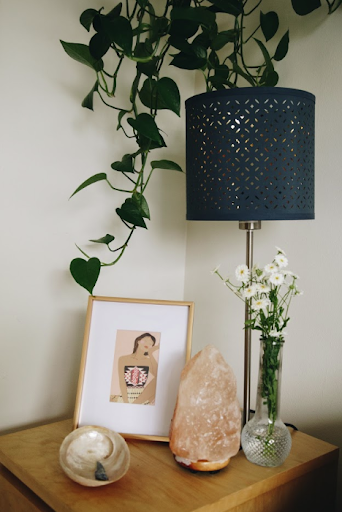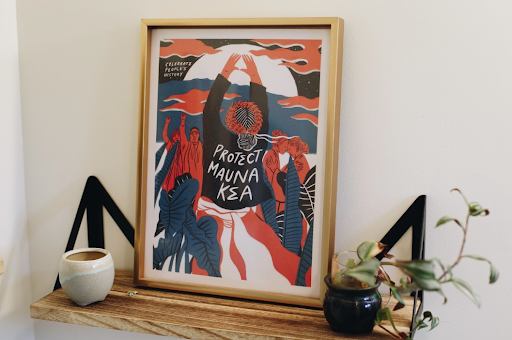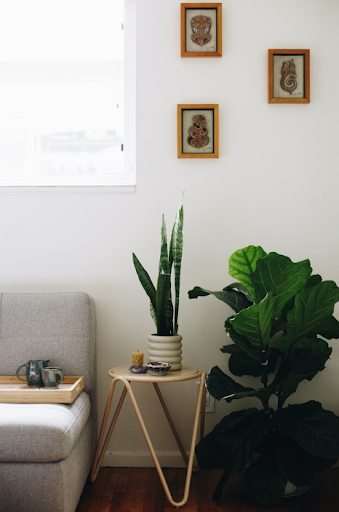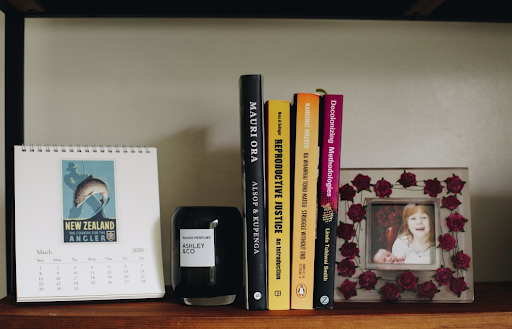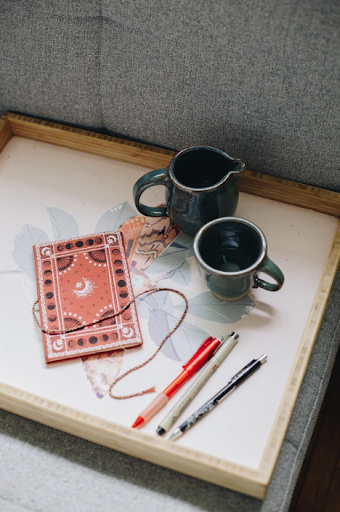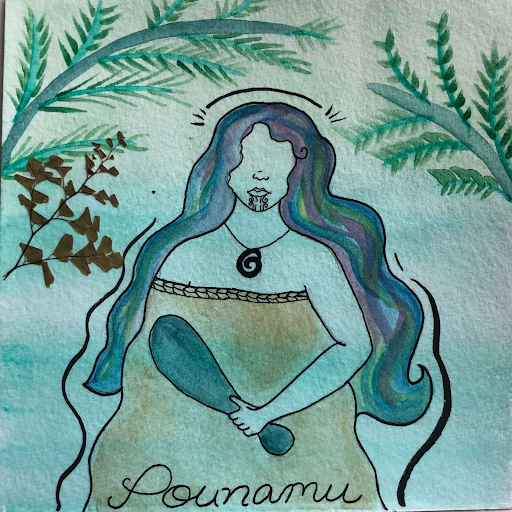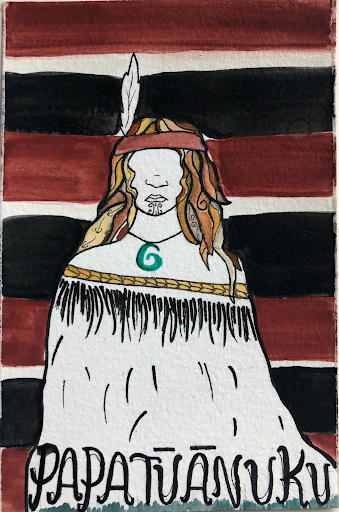Standing up to Global Injustice
“In a world that degrades and undermines indigenous women, thriving is resistance. Art can be a space for thriving, as well as a vehicle in which to force change.”
Tēnei te uri o te Whare Tapu o Ngāpuhi. Ko Ngāti Kura rāua ko Ngāti Kawau ōku hapū
Ko Zoe Moana Murray ahau
I was born and raised in Venice, California, on Tongva land in Turtle Island. I have lived in Los Angeles almost all of my life, but I have just moved to Aotearoa to learn te reo and my whakapapa. I have been visiting my whānau in Oakura every year since I can remember. Living in Los Angeles was noisy, fast-paced, and often overwhelming. I hated the traffic and smog, but I loved the people, food, music and beach. While studying in Santa Barbara, I advocated for abortion care on California college campuses.
My introduction to reproductive justice came from being a research assistant for a sociology Professor studying the Women’s March. Through this experience, I learned what it meant to be an intersectional feminist and how traditional feminism has excluded Black, Brown and Indigenous voices. Mainstream women’s movements have advocated for reproductive rights (the right to abortion) but not comprehensive reproductive justice. Reproductive justice includes the right to be a parent, the right NOT to be a parent, and the right to parent with dignity in safe and healthy environments. This is a more inclusive form of advocacy that was created by women of colour.
Zoe in the Venice Beach canals, Los Angeles
I think the most significant differences between Los Angeles and NZ are the air/environment, the way of living, and the people. In Los Angeles, sometimes the air feels oppressive, the plants upset, and some of the people high-maintenance. Most of the year, our entire state is on fire. Most recently, I’ve evacuated from the Santa Barbara fire and mudslides and witnessed the community grieve over the subsequent tragedies.
In Aotearoa, the plant life seems flourishing, the people more whānau-oriented and relaxed. The voice of tangata whenua--though still unjustly oppressed and under-valued--is louder in Aotearoa, whereas here people only acknowledge the people of the land in social justice circles. Additionally, after living and working through a pandemic that devastated my community, I am privileged to now live in Aotearoa in an environment that feels safe and...sane. It is hard to explain the immense relief and comfort I feel returning to my whenua.
What have I missed most about Aotearoa? Don’t get me started. I missed my whānau, my whenua, the fresh air, the kaimoana, the tikanga. I missed my koro, my nan, my rapidly growing cousins. I missed waking up to go fishing or to pick cockles, to walking around the rocks to my marae and to visiting my urupa. The way my memory constructs NZ is idealistic, I know. Yet, the longing I have felt for years is adamant and vivid.
Like the fires, another big difference is safety. I live in a fearful reality of car accidents, school shootings, police brutality and natural disasters. Months before I started University, a white supremacist killed 6 students at my school. Around that same time, I was in a traumatic car accident. I love Los Angeles--the way in which it supports its immigrant communities here is unlike anywhere in the U.S. However, my city and this country continue to disregard the lives of Black, Brown and Indigenous peoples. The Los Angeles Police Department has killed hundreds of people in the last decade alone--and with impunity. There are literally children in cages sitting in immigrant prisons in California.
My whānau in Aotearoa reasonably ask me why I stay here in the face of America’s continuing legacy of white supremacy. Living in Los Angeles has also been a privilege. This city has shaped me. I have been to more live concerts than I can count, and have been exposed to cultures, languages and food from all over. It is unique to be able to walk down the street and order in spanish amazing tacos or a mangoneada from street vendors. Or, on that same block, delicious ramen from the big Japanese grocery store.
L.A. was also one of the first cities in the U.S. to offer financial assistance to low-income folks affected by COVID, regardless of citizenship status--and I had the opportunity to work for this campaign. Folks in L.A. showed up in full force to protest the murder of George Floyd, just like they did during the Watts Uprisings. Black Lives Matter L.A. and Students Deserve have a strong presence here, and continue to fight for Black futures and social justice.
I think Trump is a misogynistic white supremacist. Trump, Mitch McConnel, and other Republican leaders have single-handedly stripped rights from millions of people. They have degraded reproductive healthcare, terrorised undocumented immigrants, discriminated against Muslims, placed a rapist on the Supreme Court, rolled back environmental protections. Their discriminatory immigration policies instigated fear in many communities here in Los Angeles, preventing people from accessing lifesaving services like healthcare and food assistance programs. I can go on.
Since the car accident in 2014, I’ve overcome continuous obstacles. I re-learned how to walk after months bed-ridden, adapted to living with PTSD, and grew my self-care routine to cope with anxiety. I can say that I am now thriving and owning my non-normative self! In coming o Aotearoa, I hope to ground myself in te reo, toi Maori, whakapapa, tupuna and atua. I believe in doing so I can truly care for my own wellbeing, haora.
There are many challenges the globe faces today, but perhaps one of the most pressing is climate change. People cannot exercise their reproductive freedom and bodily autonomy should they be without safe shelter and resources. This is actually an essential facet of reproductive justice. Environmental racism continues to degrade indigenous communities and communities of colour. The global refugee crisis will continue to worsen as natural disasters escalate. We cannot live full and productive lives should we be underwater or on fire in decades to come.
Cups made by Zoe
I love my art because it has brought me closer to my whenua, even from 6500 miles away. I would describe my mahi toi as fluid and imperfect. I’m always trying new mediums (at the moment this includes pottery and block printing), and I try to use my art as a healing mechanism.
For me, creating has been a vehicle for communicating, for building relationships, and for processing trauma. No matter what headspace I am in, art is always a release. I usually have an emotion or thought in mind that motivates me to create. Lately, that has been a longing for Aotearoa. I come from a very artistic whānau, and I’m lucky to always be surrounded by amazing art and creatives.
I’ve always been a feminist, but I never truly understood what it meant to be an advocate until I had an abortion and experienced how difficult it was getting one. I was stigmatized, forced to take time away from school, and ultimately dropped a class in order to commute off-campus to access abortion care. Even in California, a so-called reproductive rights safe haven, students are forced to travel upwards of hours just to access abortion care. We have the “right” to abortion in the U.S., but if we cannot access that abortion, it is not a right at all.
So I got involved as a student activist with justCARE, Campus Action for Reproductive Equity so other students wouldn’t encounter the obstacles I did. I contributed to the effort that passed the College Student Right to Access Act in California. This will put the abortion pill on public California university student health centres starting in 2023! I lobbied my legislators, attended California legislature hearings, and told my abortion story to news outlets, including the New York Times. Students in California no longer have to overcome this unnecessary burden that delays their abortion care. They can simply go to their usual on-campus doctor and receive the abortion pill.
These past few years of advocacy have shown me that young people can force change if we use our collective power. Get involved, collectivise, vote, protest, dance, make art, sing! What drives me is standing up to global injustice, and I believe art can be activism. In a world that degrades and undermines Indigenous women, thriving is resistance. Art can be a space for thriving, as well as a vehicle in which to force change.
All artwork and pottery by Zoe Murray and all photography by Dolly Ave






